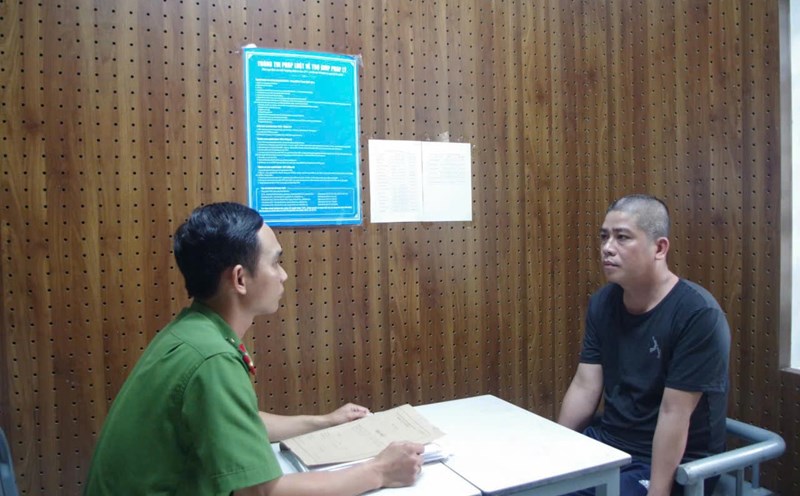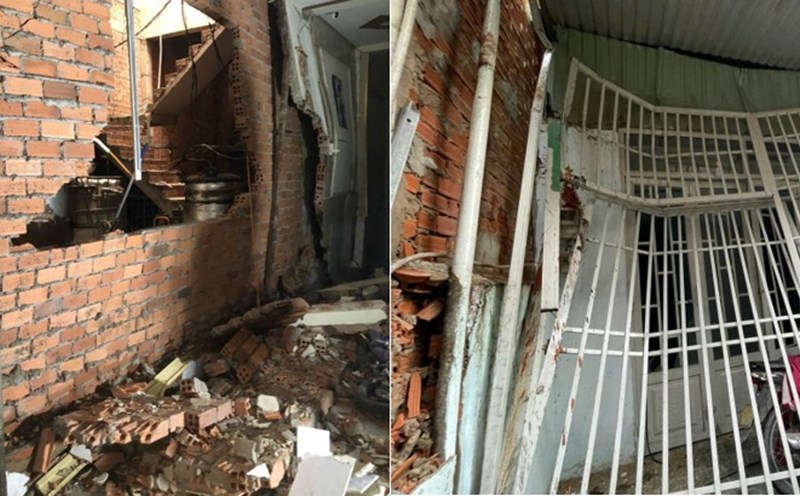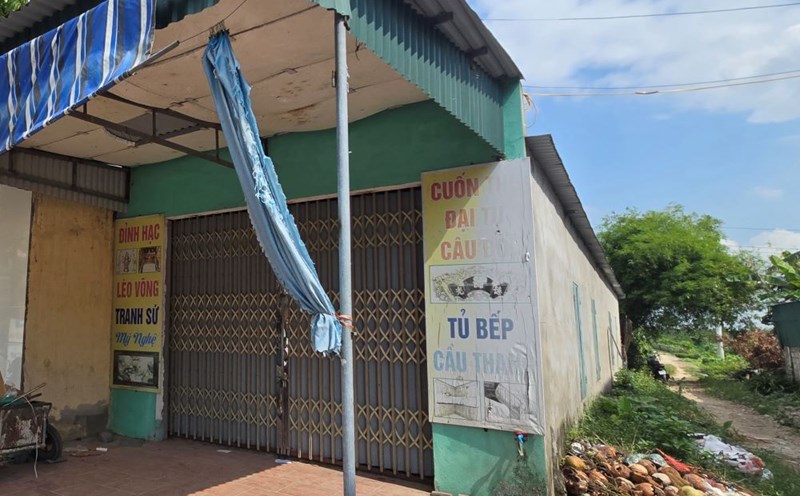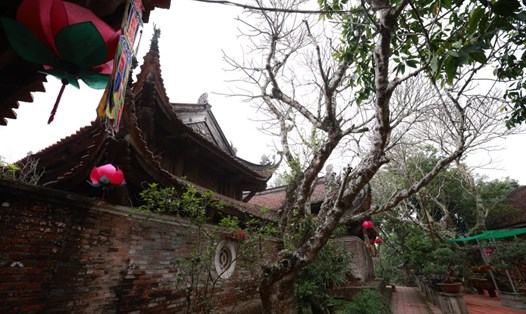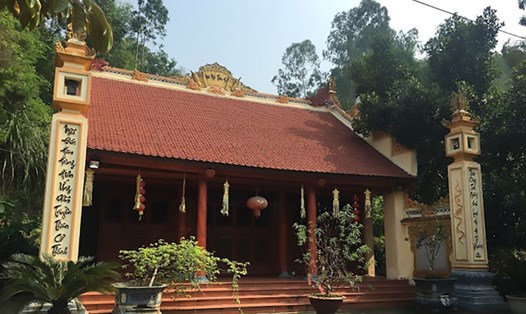Unique and harmonious architecture
Loi Dong Pagoda, the literal name is La Tien Tu, is located in Loi Dong village (also known as Lo village), Hoang Dong commune, Thuy Nguyen district, Hai Phong city. The pagoda is known as one of the largest and most ancient pagodas in the region, associated with the history of ups and downs of the land along the Cam River.
Legend has it that Loi Dong Pagoda was built during the Ly Dynasty (1010 - 1226). However, due to the destruction of war and natural disasters, no trace of that ancient temple remained. The clearest evidence of the pagoda's long history are the stone steles dating from the Le Trung Hung period (Chinh Hoa 1680 - 1705, Canh Hung 1740 - 1786) and a stone statue with artistic style. Mac Dynasty (1572 - 1595). Through many historical events, Loi Dong Pagoda has been restored and embellished many times, mainly during the Nguyen Dynasty (1802-1945). The most recent repair took place in the early months of 1994. However, the pagoda still retains its ancient and majestic features, becoming a spiritual destination that attracts a large number of tourists from all over.
Loi Dong Pagoda is an architectural complex consisting of many buildings arranged in the traditional "Dinh" style, including 5 front halls and 3 back halls, between the two houses there is a variant "crab shell" roof. and a 5-room guest house. The first impression when coming to Loi Dong Pagoda is the massive Tam Quan gate with curved roofs, built in the style of "2 floors and 8 roofs", embossed with decorative themes of four sacred animals and four precious animals. , moon face, tiger charm. The three gates are also the temple's bell tower. Stepping through the Three Gate, visitors will come to the "Buddha Tower Zen Monastery" area, including 5 tomb towers - the resting place of the monks and a large incense tree in the style of a 3-story tower, a resting place. Stone idol of King Mac.
Next to the Zen monastery is a small courtyard leading to the Buddha Hall. From the courtyard to the Buddha Palace, there is a 2-level staircase system, spanning 5 front halls. The Buddha Hall is the main architectural work of the pagoda, consisting of 5 front halls and 3 back halls. The middle space of the front hall is solemnly decorated, where visitors offer incense to Buddha. The space between the three harem rooms is where three majestic statues of Tam The Buddha are placed. The statues are all painted with gold and delicately carved. Next to the Buddha Palace is the Patriarch's house and guest house, built in traditional architecture, with bright red tiled roofs and sturdy brick walls. All create a harmonious, balanced architectural whole, bearing the architectural imprint of the Nguyen Dynasty.
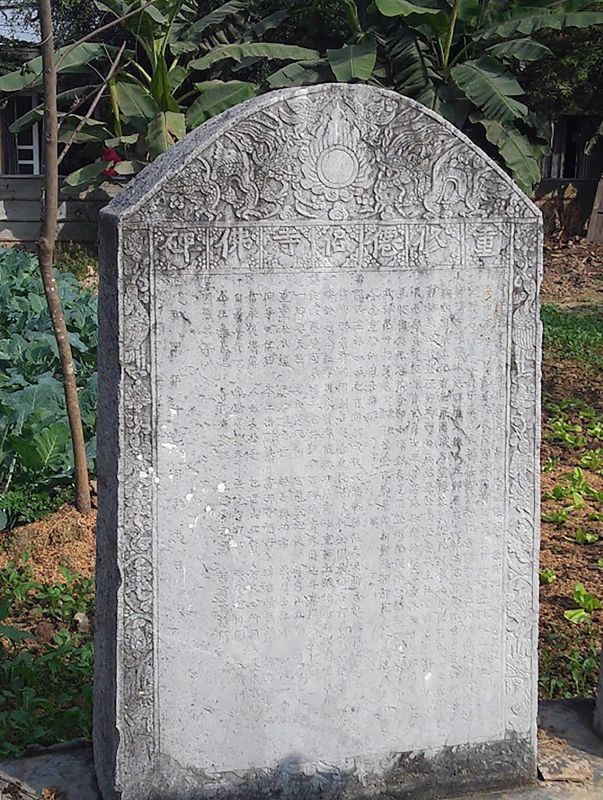
Precious treasures
Not only possessing unique architecture, Loi Dong Pagoda also preserves many relics of historical, cultural and artistic value. The most prominent is the stone statue of King Mac solemnly placed in the 3-story incense pavilion in the Zen monastery area. The statue is 103cm high, the base is 23cm high, carved from a solid slab of limestone, covered with a 1.5mm thick layer of gilded lacquer. The statue is made from limestone slabs, a material available in the region. The statue's head is wearing a helmet and is in a sitting position. In the middle of the hat's brim is a large embossed word "Vuong". Square face, straight nose, slanted eyes. Big ears, long earlobes. On the chest are a pair of floating dragons running from top to bottom, the design is identical to the dragon carved on the Mac stone pedestal at the Hai Phong Museum.
According to legend, during one of his escapes, King Mac disguised himself as a commoner and took refuge at Loi Dong Pagoda. After escaping, the king left a large amount of gold and silver to the temple to build the temple and help the villagers. To commemorate the king's gratitude, the villagers carved a statue and built a temple right in the temple grounds. Placing the statue of King Mac outside is explained by folklore as to avoid revenge from the Later Le dynasty after defeating the Mac dynasty.
In addition, the pagoda also preserves a bronze bell cast during the Minh Mang period (1820 - 1840), two Patriarch statues (80cm high) carved in the style of portrait statues, and stone steles recorded in the Later Le and Nguyen periods. History of formation and development of the pagoda. In particular, the stone stele "Thien Dai Pillar" is 1.9m high, 0.24cm wide, built in the 6th year of Chinh Hoa (1685), recording the names of good men and women who contributed money to the pagoda. It is a valuable source of information to help Posterity can understand more about the cultural and spiritual life of local people at that time.
Today, Loi Dong Pagoda is not only a place of religious activities for local people but also a spiritual destination that attracts tourists from all over. Coming to Loi Dong Pagoda, visitors feel like returning to a pure space, admiring ancient architectural works and feeling the unique cultural and spiritual beauty of Hai Phong.






